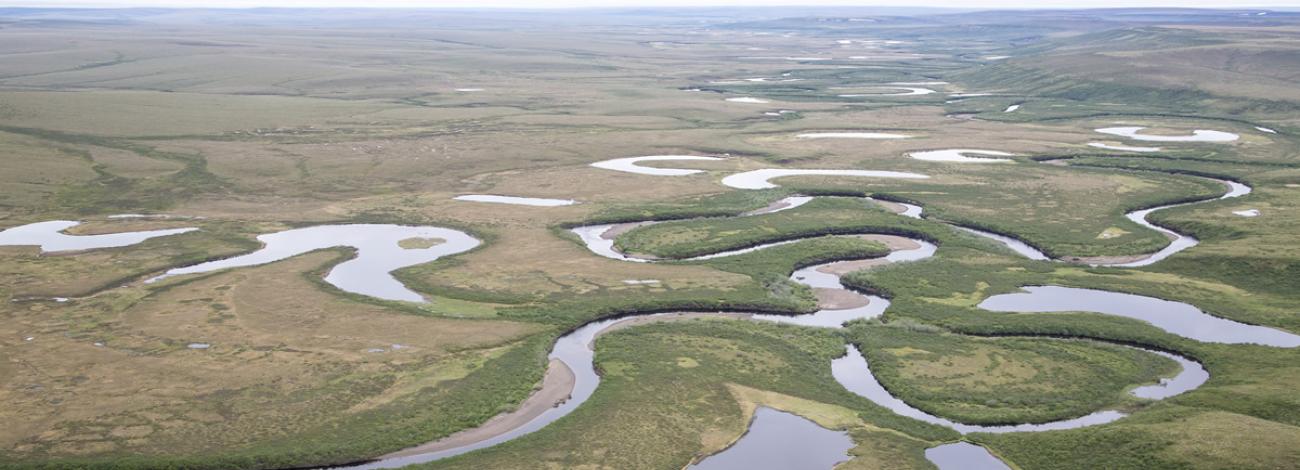
National Petroleum Reserve in Alaska Rule
On April 19, 2024, the Bureau of Land Management updated its regulations for the management and protection of the National Petroleum Reserve in Alaska for the first time in more than 40 years to balance development of oil and gas with protection of the other natural resources in the Reserve. The rule change went into effect June 6, 2024.
Extending from the northwestern slope of the Brooks Range to the Arctic Coast, the NPR-A encompasses roughly 23 million acres of public land managed by BLM.
Under the Naval Petroleum Reserves Production Act of 1976, as amended, Congress directed BLM to balance oil and gas development with the protection of fish and wildlife, subsistence, recreational, and other values in the NPR-A, with added protection for special areas. The NPRPA requires management of special areas to "assure the maximum protection of such surface values to the extent consistent with the requirements of this Act for the exploration of the reserve." (42 U.S.C. 6504(a)). The updated rule allows BLM to better meet this mandate by establishing strong protections for special areas, allowing for the designation of additional special areas, and providing clear guidelines for development that safeguard subsistence resources throughout the Reserve, consistent with key provisions of the current NPR-A Integrated Activity Plan, while respecting valid existing rights.
Summary of Refinements since the Proposed Rule
After a robust 90-day comment period, with 6 public meetings and more than 100,000 comments received, BLM made several refinements to the proposed rule, including:
- Clarification that the requirements of this rule only apply to oil and gas activities.
- Reorganization and clarification of the requirements for designating, de-designating, or otherwise changing the boundaries or management of special areas.
- Change of the time period to regularly evaluate the need for new or modified special areas from five to 10 years, while specifying that BLM may conduct the evaluation sooner if the authorized officer determines that changing conditions warrant earlier review.
- Clarification to assure maximum protection of significant resource values in special areas, “consistent with the requirements of the NPRPA for exploration [and production] of the Reserve.”
- Clarification of the process for preparing an environmental analysis and reaching a final decision on proposed leasing, exploration, development, or new infrastructure in special areas. If BLM determines that the proposal cannot avoid adverse effects on significant resource values in a special area, then BLM must prepare a Statement of Adverse Effect. The Statement of Adverse Effect will be incorporated into the environmental analysis and provided to the public for review and comment.
- Clarification that BLM will seek co-stewardship opportunities not just in managing special areas, but also in managing subsistence resources more broadly throughout the Reserve.
- Clarification that economic interests in a special area provide a basis for Tribal consultation.
For a more detailed accounting of all the refinements, review the Summary of Changes in the Final Rule section in the Federal Register Notice.
Request for information:
In July, BLM published a Request for Information (RFI) seeking input on Special Areas in the NPR-A. The RFI input on whether to initiate a process to consider adding additional protection measures, including by identifying additional significant resource values in existing Special Areas, expanding Special Areas, or creating new Special Areas.
BLM received nearly 80,000 comments in response to the request for information it issued in July 2024.
Informed by these submissions, the Department of the Interior released a report summarizing public input received by the Bureau of Land Management (BLM) on how best to ensure maximum protection of surface resources in the National Petroleum Reserve in Alaska (NPR-A). The report outlines steps the BLM will take to protect vital subsistence resources identified by numerous comments, consistent with the agency’s statutory obligations to administer an oil and gas program and assure the maximum protection of significant surface values in the Reserve.
The BLM also issued a memorandum, providing direction on interim measures the BLM will apply to its management of the NPR-A to protect the significant subsistence resource value in existing Special Areas and in proposed new and modified Special Areas, while it undertakes a public process to more fully evaluate maximum protection measures to secure this significant resource value for current and future generations.
Submitted letters and information
NPR-A Special Area RFI, unique responses
Form letters received during the NPR-A Special Areas RFI
